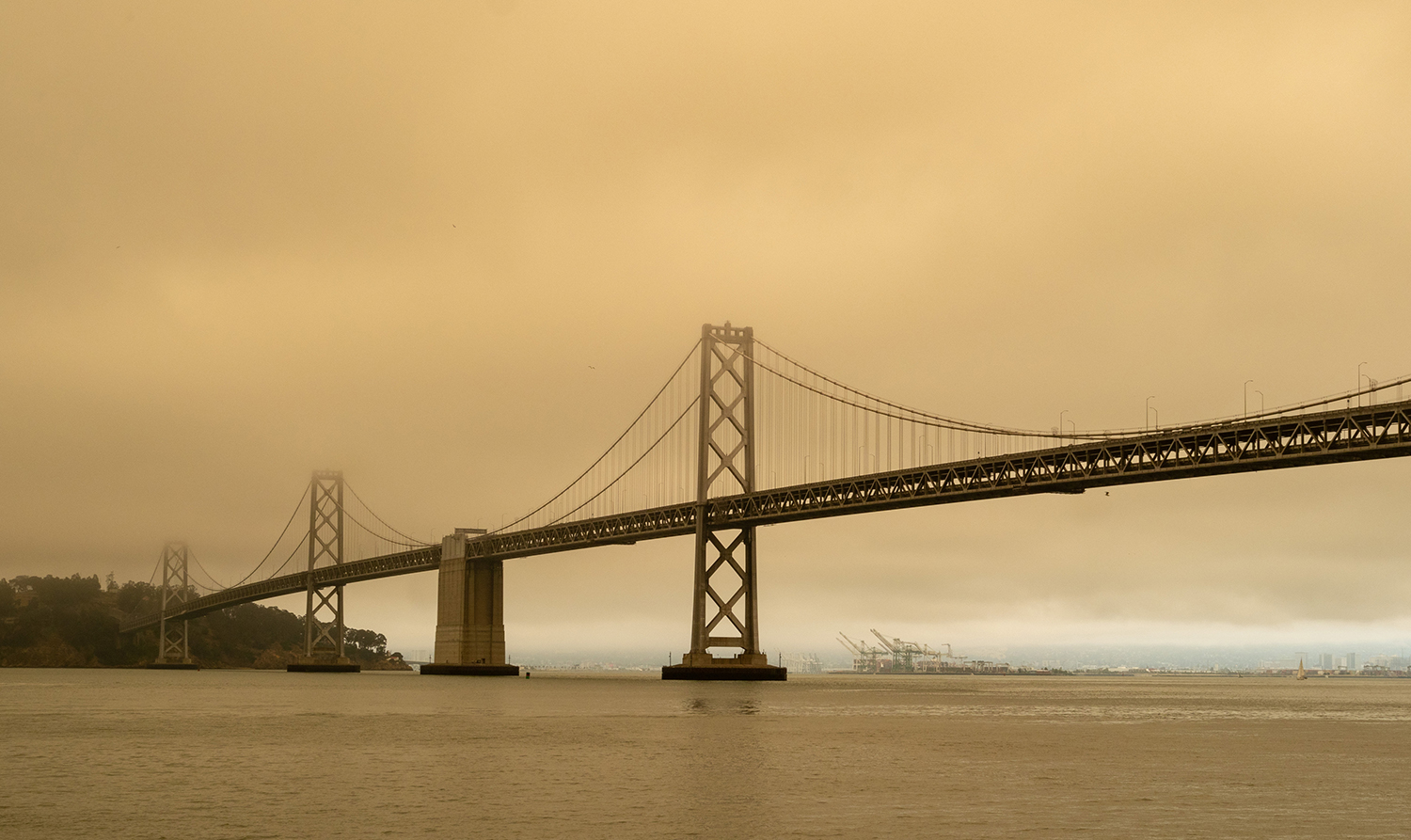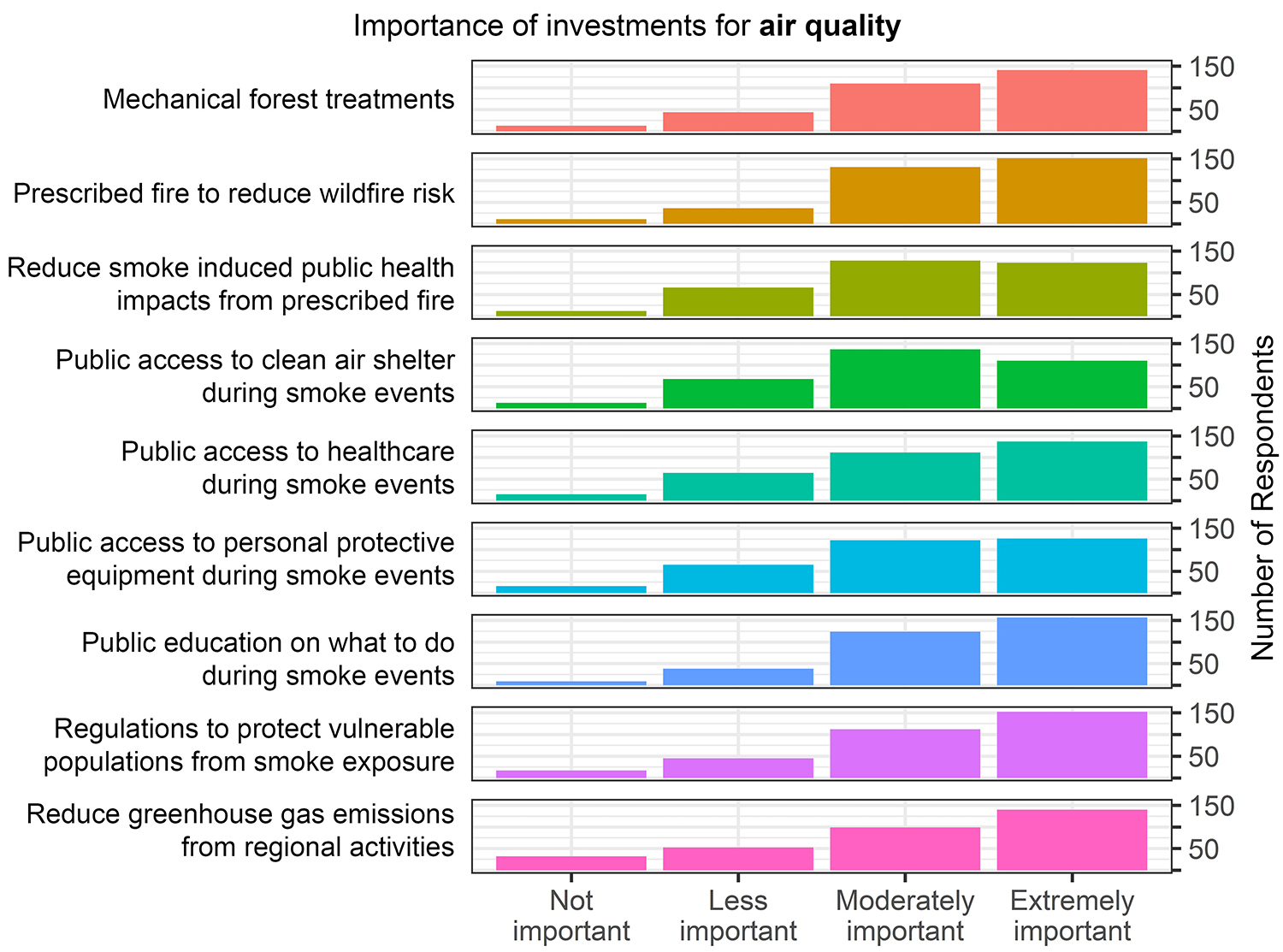Central Coast Regional Profile
Air Quality

photo credit: US Forest Service
Overview
Wildfires can have public health impacts that extend far beyond the fire, impacting people and communities hundreds of miles away. Smoke from wildfires can expose people, livestock, crops and wildlife to hazardous air pollutants for weeks, as experienced by the Bay Area during the 2018 wildfire events. Inhalable fine particulate matter (PM2.5) and other pollutants in smoke can exacerbate a range of respiratory and cardiovascular issues and even cause premature death. Black carbon (soot) produced by wildfires may be especially unhealthy; in addition to cardiovascular and respiratory diseases, evidence has linked it to increased risk of cancer, and potentially, birth defects.
Smoke from fire that burns artificial materials, such as buildings and vehicles, can expose downwind populations to elevated levels of toxic metals, such as lead and copper. During the 2018 Camp Fire, which tragically killed 85 people and burned 14,000 residences in Northern California, lead concentrations in the air were observed to be more than 40 times higher than normal at the Point Reyes monitoring station, despite the station being 120 miles away from the fire. These far-reaching impacts may cause unexpected health risks, especially for vulnerable populations, such as children, that have lower tolerance for elevated toxin concentrations.
Recent California wildfires have motivated new research to assess the public impacts of wildfire smoke and how it might disproportionally affect vulnerable populations, such as outdoor workers. One study modeled current and future wildfire smoke emissions and quantified the potential exposure of California agricultural workers to predicted PM2.5 concentrations. They found that agricultural regions of the Central Coast, such as Monterey County, may be especially vulnerable to poor air quality under future climate conditions. There are some measures to protect workers from extremely hazardous conditions, such as requiring employers to provide personal protection equipment (e.g., N-95 respirators) or shifting work to less hazardous areas. However, as they currently stand, these regulations do not go into effect until high levels of pollution are reached, which means that outdoor workers may still be exposed to moderate levels of pollution for significant periods of time.
Indoor air quality is also impacted by wildfire smoke, which can also disproportionately affect disadvantaged communities. Older or poorly-maintained buildings may allow more outside smoke into the living spaces and may not have adequate filtration systems to reduce exposure to the inhabitants. There are at-home approaches that can effectively reduce indoor pollution, such as reducing ventilation (e.g., sealing windows) and filtering air. Air conditioning and associated filtration systems can significantly decrease indoor PM2.5 concentrations. However, many residents of the Central Coast region do not have air conditioning because the cooler coastal climate historically has not required it. Increasing access to public indoor clean air spaces, incentives to retrofit homes and buildings that are poorly insulated, and personal protective equipment during smoke events may help to protect these vulnerable populations. Proactive work in natural and working lands that reduce wildfire extents, intensity, and duration will be a key element in reducing overall potential exposure into the future.
Prescribed fire has been proposed as a strategy for reducing the risk of uncontrolled and catastrophic wildfires that can inundate communities with wildfire smoke for weeks at a time. Fires that burn at lower intensity over smaller areas emit fewer pollutants than large, high-severity wildfires. Fires that only burn vegetation also do not release the hazardous chemical emissions of fires that burn structures and vehicles. Additionally, prescribed burn organizers and local air districts can collaborate to minimize air quality impacts by planning burns to occur during optimal weather conditions and limit the duration communities may be exposed to smoke. They can also provide advanced public notice of planned burns so that nearby residents can take precautions to reduce smoke exposure and work with public health officials to notify and protect more susceptible individuals. Continued research is needed to further understand the health impacts associated with prescribed fire smoke, especially near populated areas, and how managers can better address and mitigate these impacts in their management of these fires.
Stakeholder Perspectives

All potential actions for improving air quality received a mean rating of moderately important. Actions that ranked as slightly higher priorities were public education on what to do during smoke events and prescribed fire to reduce wildfire risk. These were closely followed by mechanical forest treatments to reduce wildfire and regulations to protect vulnerable populations from smoke exposure.
Interview findings: Many interviewees raised the topic of air quality as both a challenge for conducting fuel reduction treatments and as a goal for improving management approaches. Similar to other regions, there was a sense that prescribed burning can negatively impact air quality, but there was broad consensus from interviewees that these impacts were significantly less than the smoke impacts that would result from wildfire occurrence. Interviewees noted that communities that have experienced wildfire nearby tend to be more supportive of using prescribed fire for management. In many areas of the region, there is significant public resistance to prescribed burning and preference for prescribed grazing and mechanical treatments. Some groups are using equipment called carbonators to burn biomass from mechanical vegetation treatments on-site, instead of trucking it to distant locations. However, they found that air quality districts did not know how to regulate the new technology. At least one group was able to work with the local air quality board to assess that carbonators do not have significant negative impacts on air quality, resulting in permission to use it with fewer restrictions.
